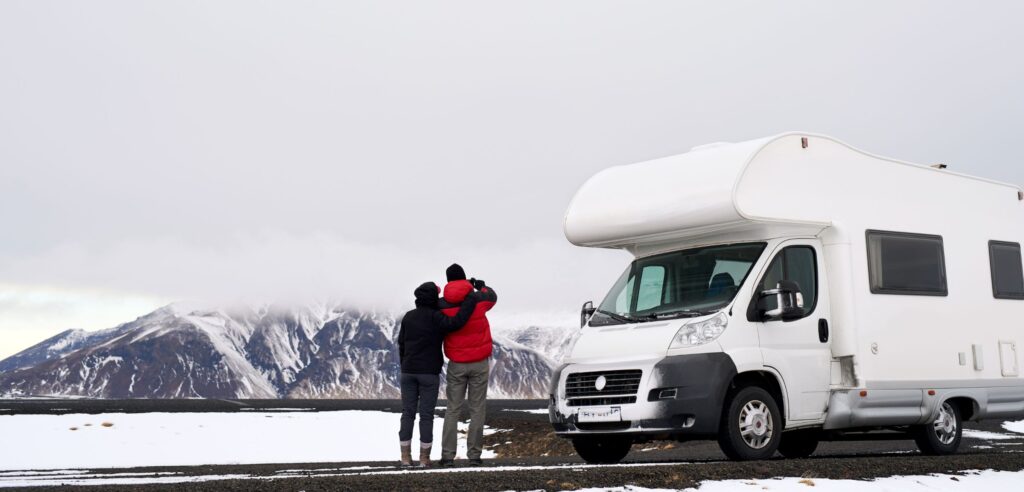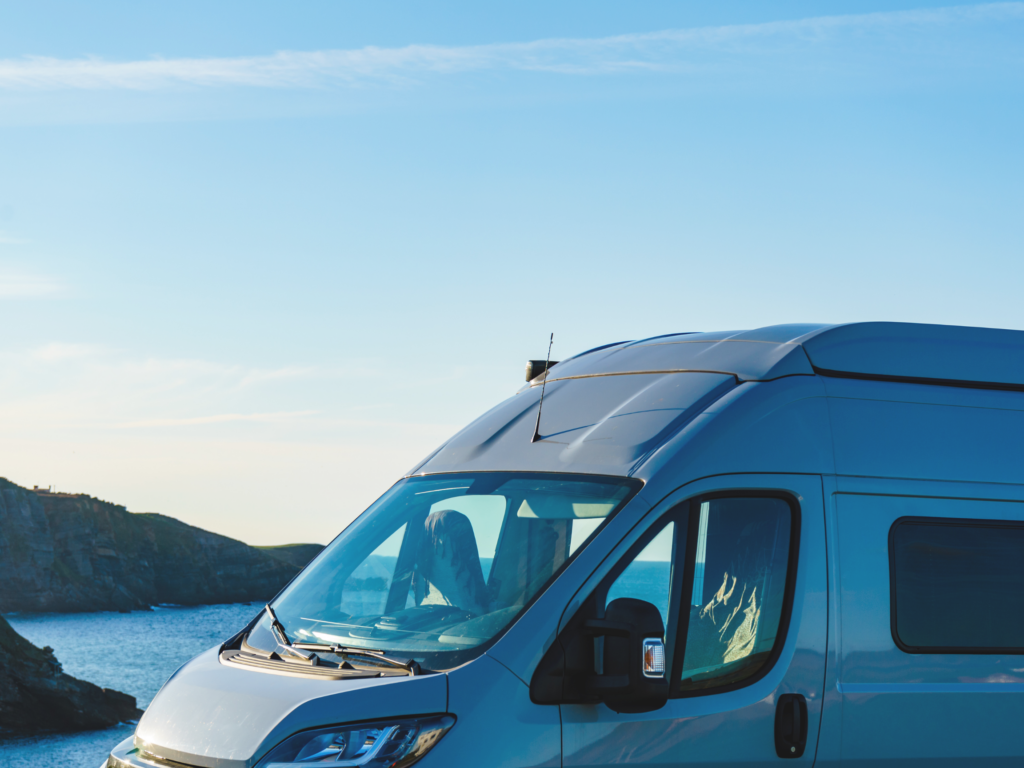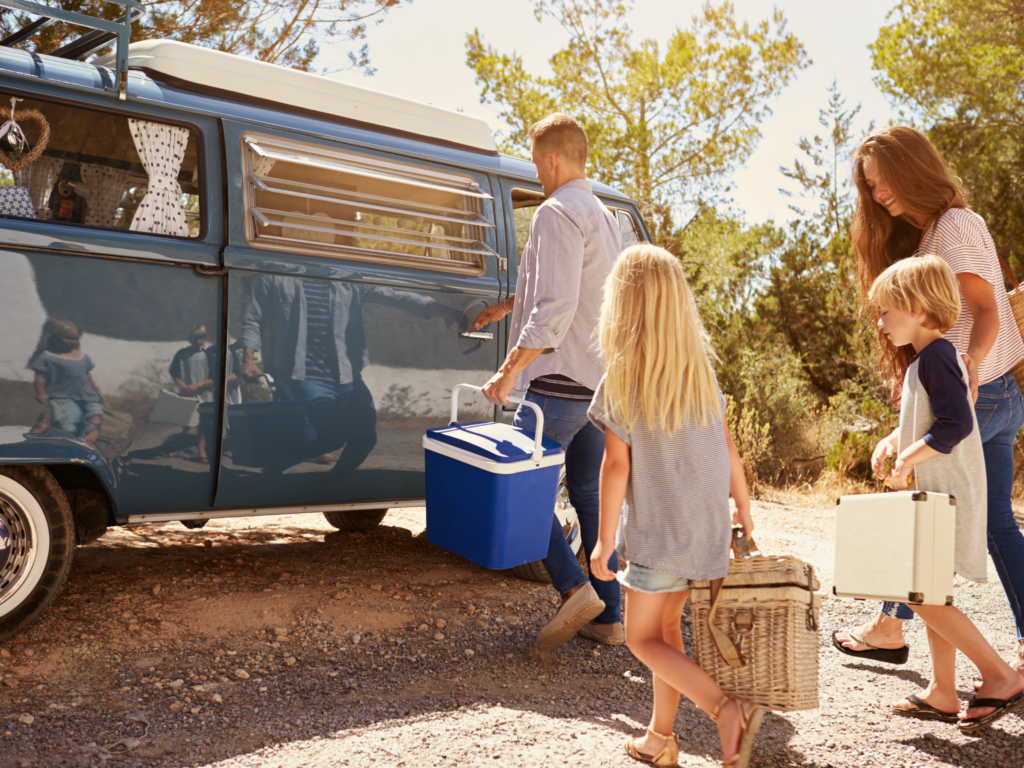Part of the appeal of van life is the ability to find free camping and parking in beautiful areas nationwide. While in some areas, it is easier to find free campsites than others, it’s completely possible to find them with the right resources and planning.
In two years, we only paid for camping twice while living van life full time. It wasn’t always picturesque locations like you see on social media, but the majority of our time was spent on public lands well away from any “campground vibes” that most established campgrounds have.
In this guide, I’ll share my first-hand tips on how to find free camping spots, adhere to Leave No Trace principles, and cover the legalities of overnight parking at a free campsite.
Table of Contents
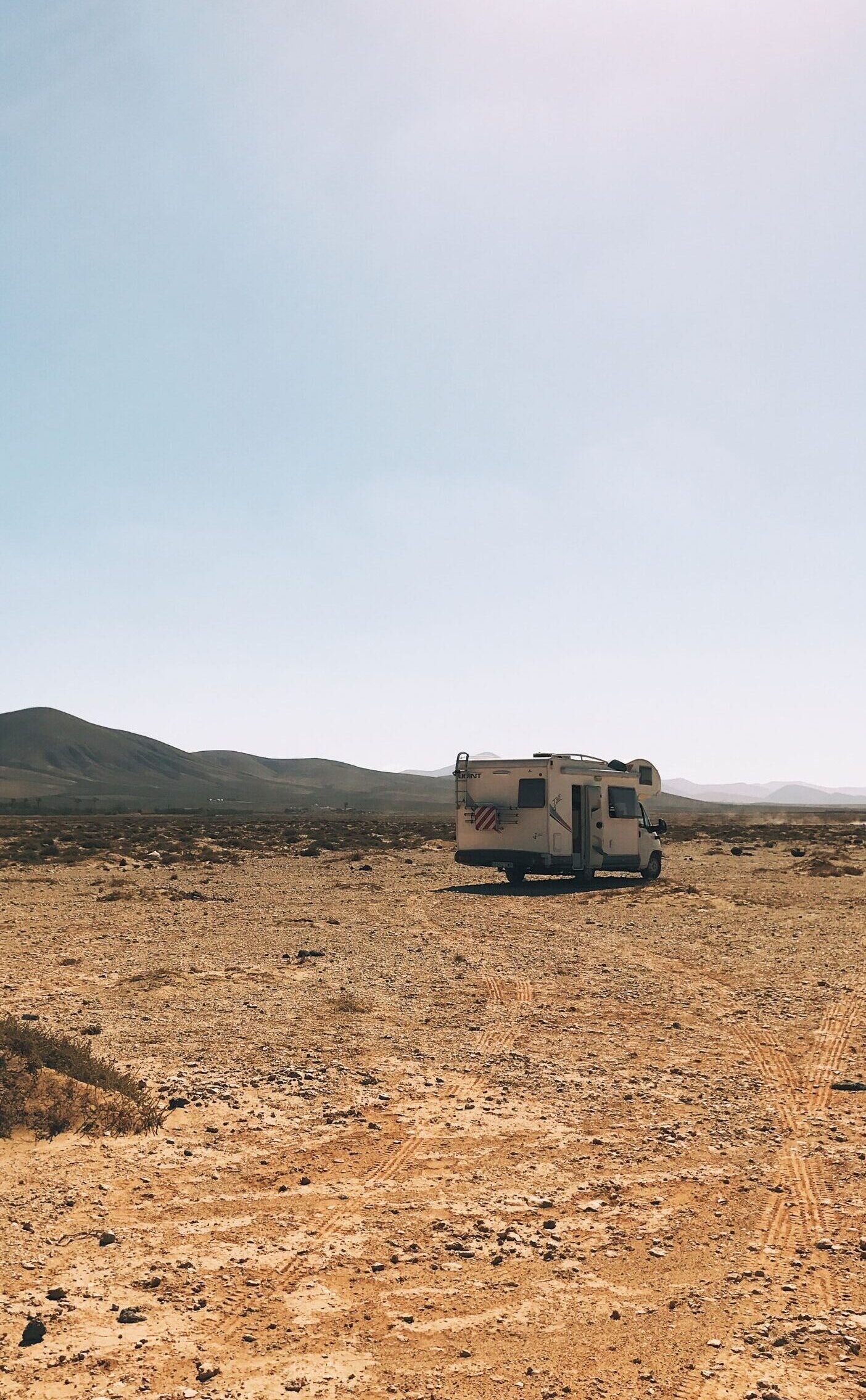
Benefits of Free Camping in a Van
While there are many reasons that free camping can benefit the adventurous traveler, these are the top three that we found were worth the extra work involved in finding free campsites.
Cost Savings:
Van life offers a liberating escape from the financial constraints of traditional accommodation. While some choose to shell out dollars for hotels or campsites while traveling, we chose to embrace the freedom of camping in free locations.
The savings we amassed over time were able to be redirected towards supporting local businesses as we traveled through towns, upgrades to our van, and having the budget for unexpected adventures. This allowed us to focus on experiences rather than accommodations, fostering a minimalist yet extremely fulfilling lifestyle.
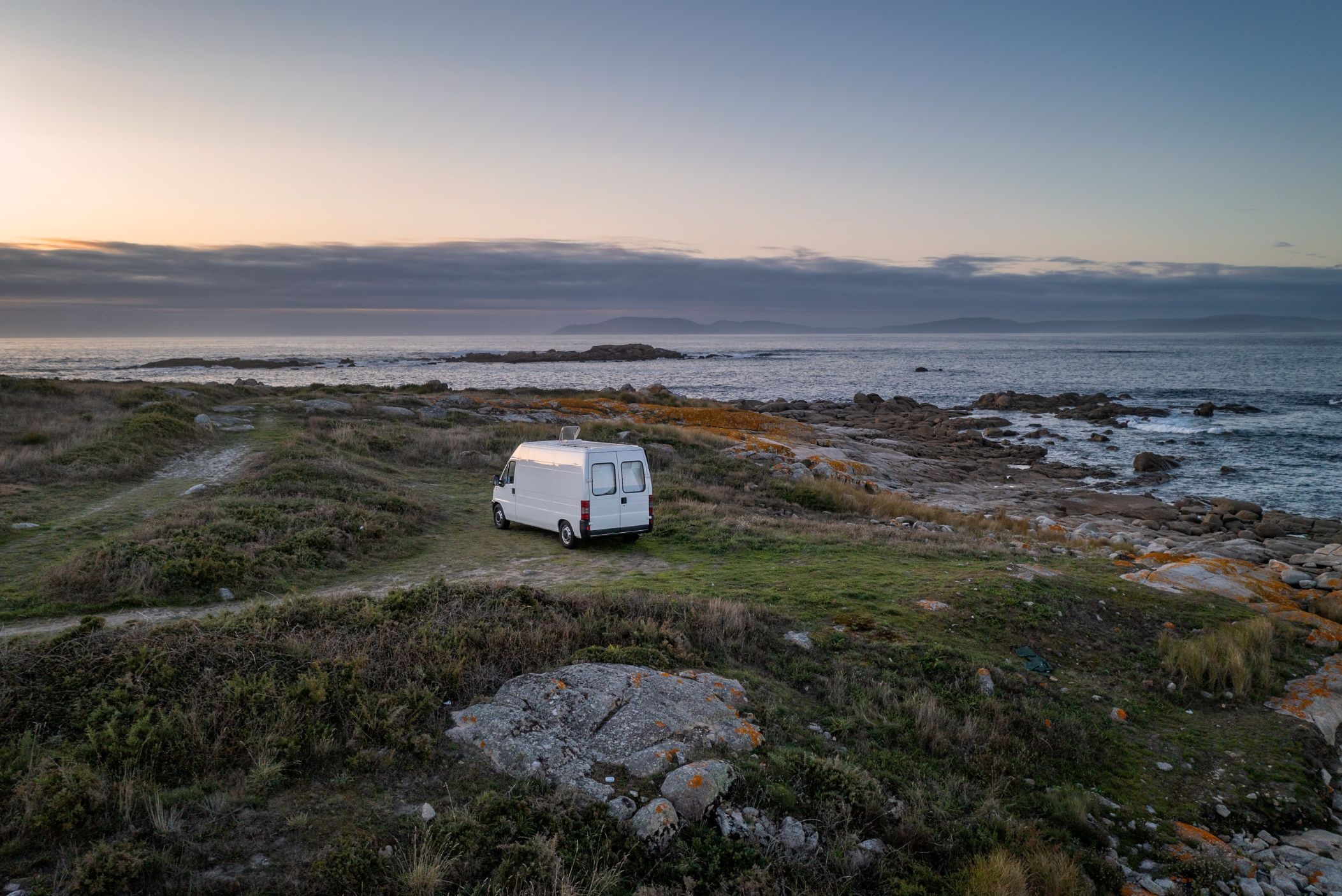
Flexibility and Spontaneity:
With no fixed itinerary or reservations tying us down other than work schedules and needing internet connectivity some days, we could change our location on a whim.
This adaptability transformed what some might consider mundane travel into a continuous journey of discovery. Whether we were stumbling upon a secluded beach or camping beneath a starlit sky with no one else around for miles, the spontaneity of van life turned each day into an opportunity for a new and unexpected adventure.
Closer to Nature:
One of the most enchanting aspects of van life for us was the opportunity to wake up surrounded by nature’s beauty. Instead of peering through a hotel window, we prefered to step outside into the crisp morning air, greeted by the rustle of leaves or the distant sounds of wildlife.
This intimate connection with nature fostered a deep appreciation for the environment, making each camping spot not just a place to rest but a destination in itself.
We found van life is not just a mode of transportation; it’s a philosophy that prioritizes experiences, freedom, and a genuine connection with the world around us.
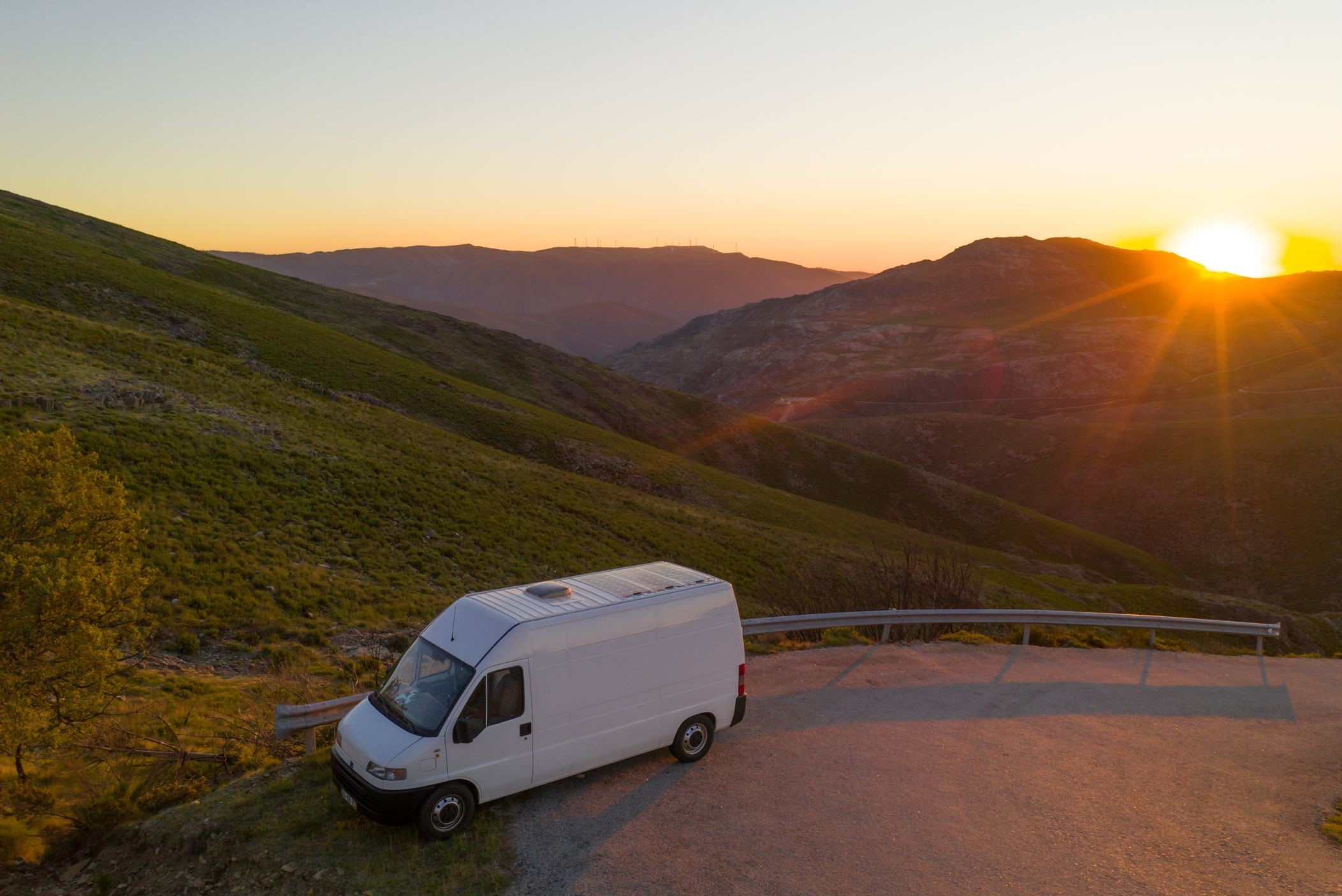
What is Boondocking?
Boondocking, often synonymous with dry camping, wild camping, or dispersed camping, is a style of off-grid camping that involves staying in remote and undeveloped areas without the amenities typically found in traditional campgrounds. Unlike established campsites with designated spaces, boondocking enthusiasts seek out secluded spots in nature, embracing self-sufficiency.
What distinguishes boondocking from conventional camping is the absence of amenities like electric hookups, water sources, or designated fire pits. Instead, boondockers rely on their own resources, often equipped with solar panels for power, water storage solutions, and a commitment to Leave No Trace principles to minimize their environmental impact.
What are Dispersed Camp Sites?
Dispersed campsites refer to camping areas not designated or developed like traditional campgrounds. Unlike established campgrounds with designated spots, a dispersed campsite does not have a picnic table, fire ring, amenities, or other facilities. They are often found in remote, unmarked areas within public lands and are nothing more than a pull-off on a forest service road large enough to park on.
Most dispersed campsites are located on public lands, including national forests, Bureau of Land Management (BLM) areas, and other government-managed territories.
Without the amenities found in a managed camp site, those choosing dispersed campsites need to be self-sufficient, bringing their own water, power sources, and other necessary equipment for a comfortable stay.
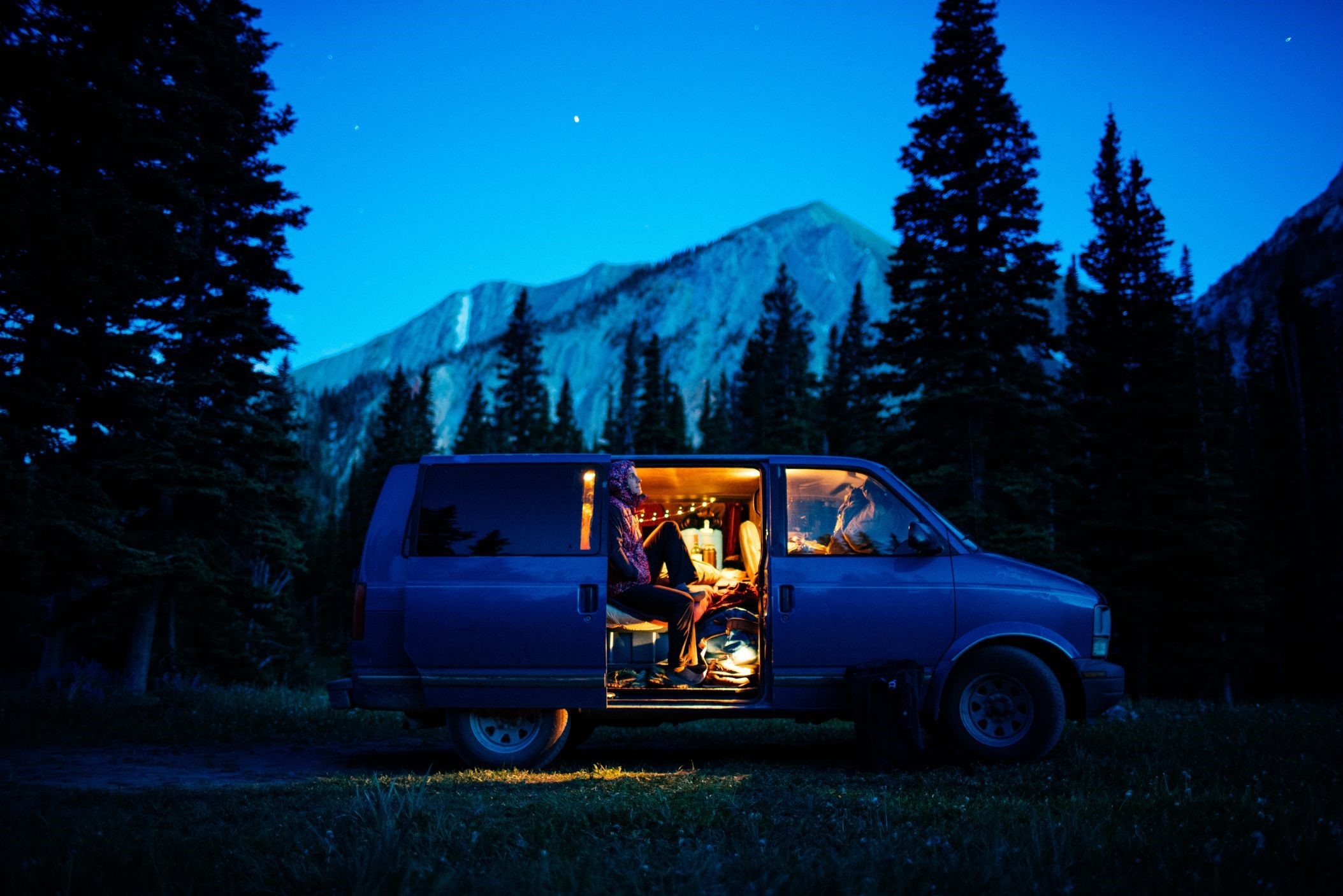
Finding the Perfect Spot
Finding free camping areas wasn’t always easy. There were days we would drive hours only to find the spot we had planned on staying was already taken, inaccessible, or didn’t end up being what we expected.
We learned quickly to always have a backup plan if the first destination didn’t work out. Here are some of our top tips for finding free camping:
Online Resources:
Mobile apps like iOverlander, Campendium, and Free Roam provide a comprehensive database of user-reviewed spots, detailing conditions, accessibility, and local regulations. These apps serve as indispensable companions, guiding travelers to (what once were) hidden gems and ensuring a hassle-free journey. Some dispersed campgrounds are even on Google Maps.
This is a positive and negative evolution of the lifestyle – while it allows more people to access otherwise unknown places, it brings more traffic to those areas, and over time, it can be detrimental to the land.
The same goes for social media groups, such as dedicated van life communities on Facebook and Instagram, which offer real-time recommendations, fostering a sense of camaraderie among like-minded individuals who share their favorite off-the-beaten-path locations.
Offline Methods:
While technology has revolutionized how we travel, the value of local knowledge cannot be overstated. Engaging with the communities you encounter and seeking advice from locals can lead to insider tips on the best, often undisclosed, free dispersed camping spots.
Beyond this, public lands managed by the Bureau of Land Management (BLM) and other government agencies, such as National Forests, provide vast expanses of dispersed camping opportunities. You can visit or call the visitor center or Forest Service office closest to where you are traveling to ask about local free camping opportunities and pick up paper maps when available.
Apps like Gaia GPS and OnX Offroad have offline capabilities and show public land boundaries, free campgrounds, national forest service roads, and other points of interest that can help you find free overnight camping.
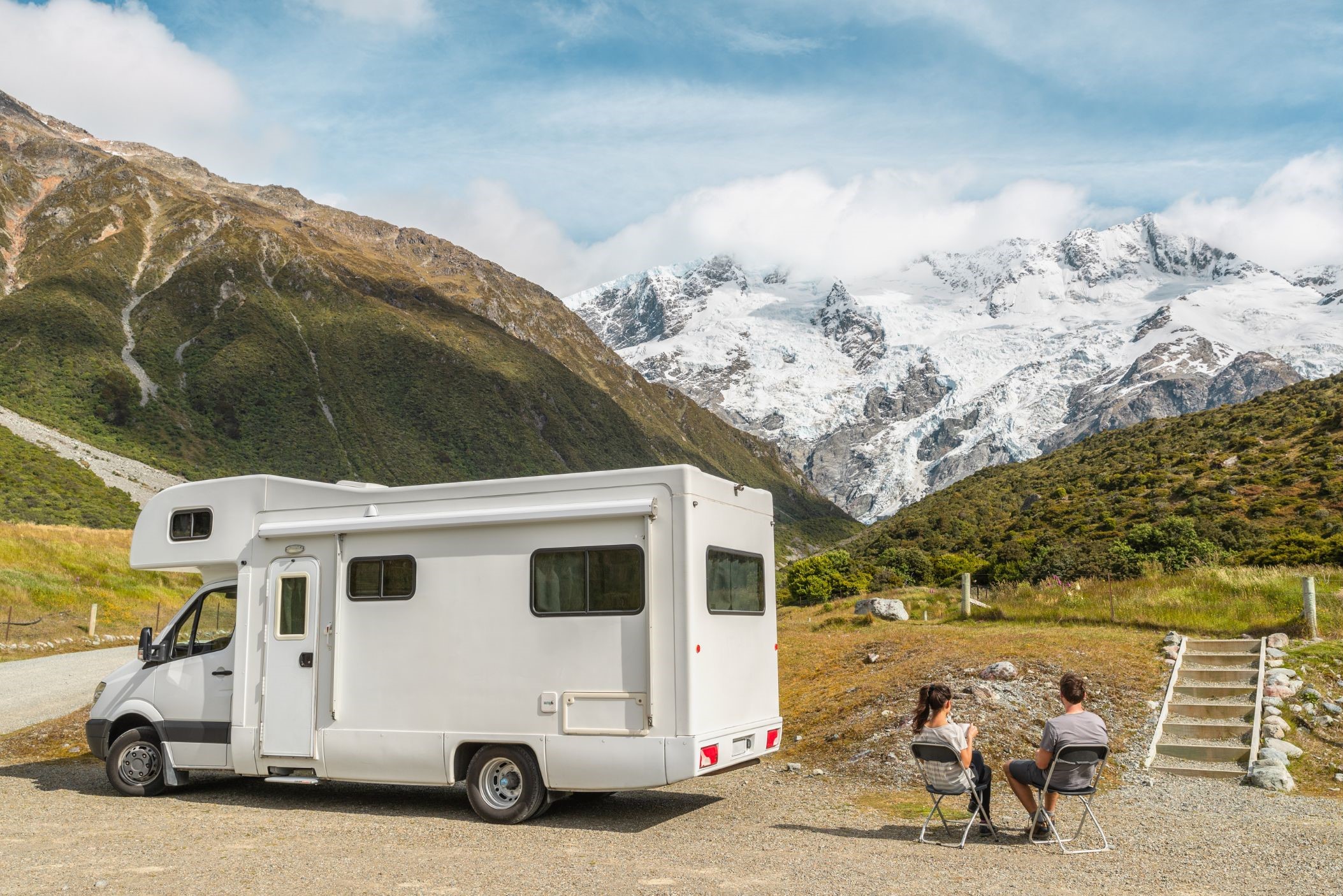
Leave No Trace Principles
Many dispersed camping areas are becoming littered with the huge influx of travelers learning about free campsites and how to find them. Even the weekender who doesn’t understand Leave No Trace Principals on a car camping trip or while tent camping can negatively impact forest service land or free BLM camping areas.
What is Leave No Trace?
At the heart of responsible van life and free camping lies the Leave No Trace ethos. This principle encourages a deep respect for the natural world, emphasizing the importance of minimizing our environmental impact.
Leave No Trace is not just a set of rules; it’s a mindset that strives to preserve the beauty of the outdoors for future generations. Whether camping in a remote forest or along a pristine shoreline, adhering to these principles ensures that the splendor of these locations endures.
Importance of Minimizing Environmental Impact:
The ecosystems that van lifers encounter are delicate, often existing in a delicate balance. Understanding and respecting this balance is crucial to minimizing environmental impact. When you find a free camp site, it should look no different when you leave than when you arrived (unless you’ve cleaned up someone else’s garbage).
Simple acts like properly disposing of waste, avoiding damage to vegetation, and refraining from disturbing wildlife contribute to preserving these ecosystems. By treading lightly and leaving nature as we found it, van lifers play a vital role in safeguarding the landscapes that make their journey so enchanting.
Promoting Responsible Camping Practices:
Leave No Trace extends beyond the physical environment to include the broader experience of camping. It encourages mindfulness about noise levels, the use of campfires, and other activities that may disturb the tranquility of the surroundings.
Responsible camping practices not only protect the environment but also foster positive relationships with local communities and fellow travelers. We are already seeing huge impacts from people not following Leave No Trace Principles, and local municipalities are petitioning to close our beloved public lands in places where the impact is ongoing.
Year after year, once pristine places get filled with trash, damaged by rigs driving off-road, and even burned from irresponsible campfire use. These places often get closed to everyone because a few people unknowingly made such a detrimental mark on the land.
Always leave campsites cleaner than you found them, drown your campfires completely, and never drive over vegetation or rut roads, making them impassable to others.
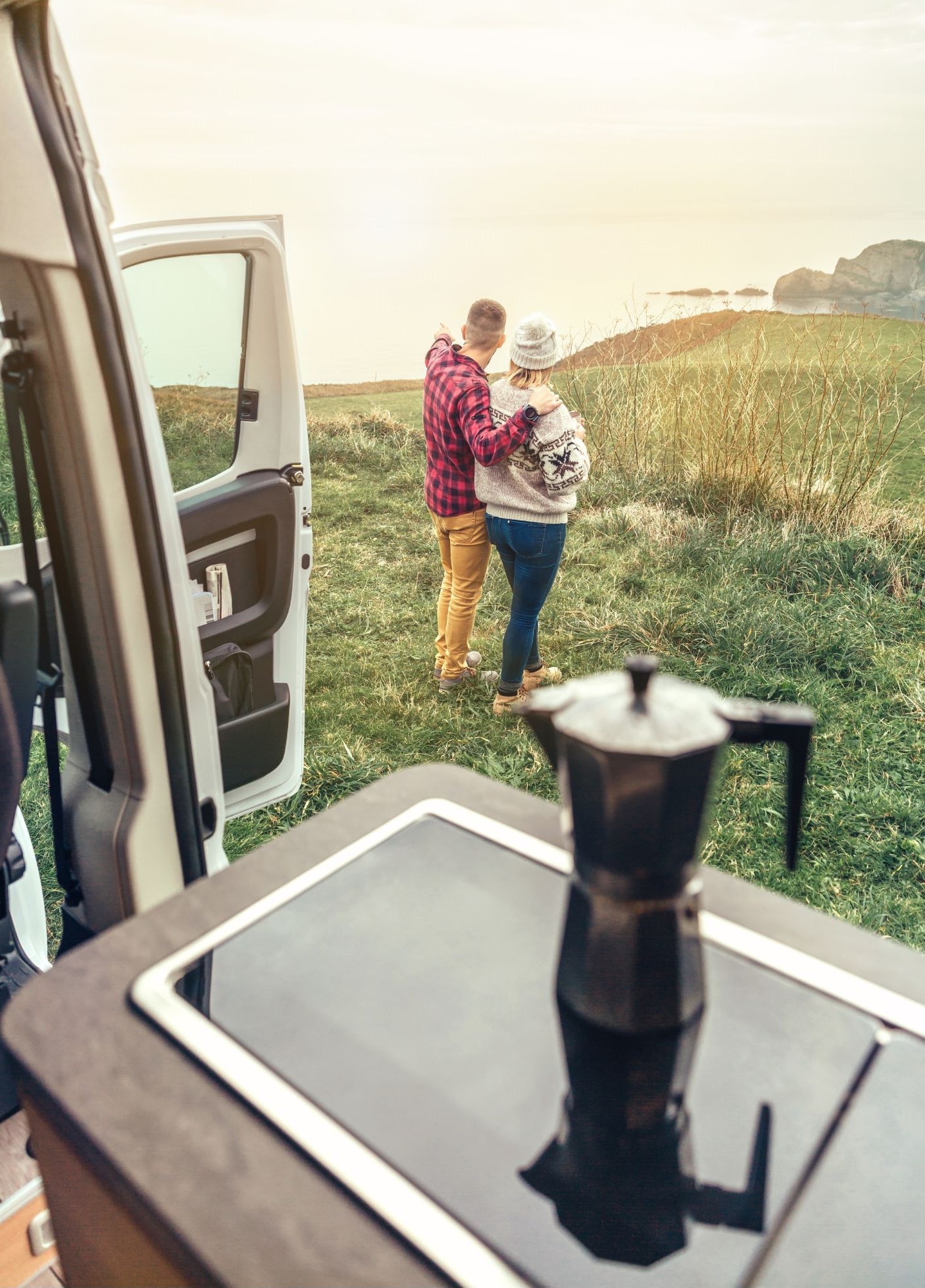

Navigating Legalities
Not all public lands are the same. A National Forest might have restrictions on dispersed camping in some areas, and not all BLM land is open to free camping. Some National Forest Land has restricted time limits for overnight camping. There might be restrictions on human waste management, such as not allowing cat holes or compost to be disposed of.
Understanding Local Regulations:
Always respect the rules for our public lands and know they are there for a reason. Municipalities, counties, and states can have distinct rules regarding parking and camping. Some places may have designated campgrounds for overnight parking, while others may strictly prohibit it. Researching and understanding local regulations ahead of time will help you plan your routes and choose free overnight parking spots that align with legal requirements, ensuring a smooth and lawful journey.
If you are unsure of local regulations in place, call your local Forest Service or the Bureau of Land Management office to ask what is allowed on the land you plan to visit.
Private Property Etiquette:
Respecting private property rights is paramount in the van life community. Seeking explicit permission from landowners before traveling through private property demonstrates courtesy and adherence to ethical principles.
You will find some free campsites require you to drive on legal easements that go through private land. It is imperative that you have good maps and understand where private property lines merge with public lands. Never camp on land that could be private property and respect no trespassing signs on any roads that you drive on while trying to find dispersed camping options.
Building Positive Relationships with Communities:
Van life is not just about the places you visit; it’s also about the people you encounter along the way. Engaging positively with local communities fosters goodwill and contributes to the overall acceptance of van life. Supporting local businesses and adhering to community norms all play a role in building positive relationships. This approach not only enhances the overall van life experience but also paves the way for future van lifers by leaving a positive impression on the communities visited.
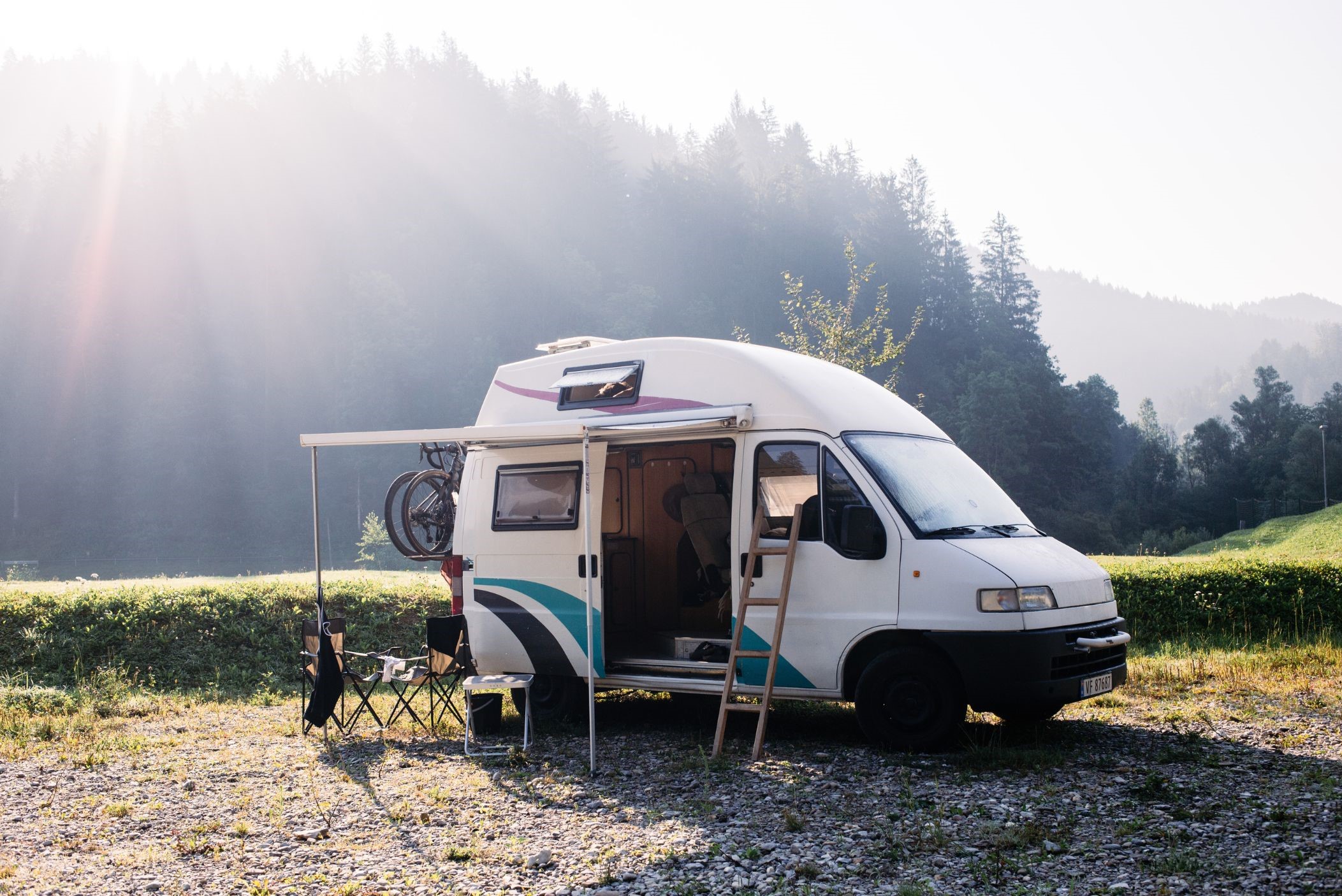
Conclusion
Van life is an adventure unlike any other. The art of free camping opens doors to unparalleled experiences, but it comes with responsibilities. By researching potential free camping areas ahead of time, following Leave No Trace principles, and respecting local regulations, you can make the most of the van life lifestyle while positively impacting the environment and the communities you encounter.
So, gear up, hit the road, and go Find Your Outside™!
